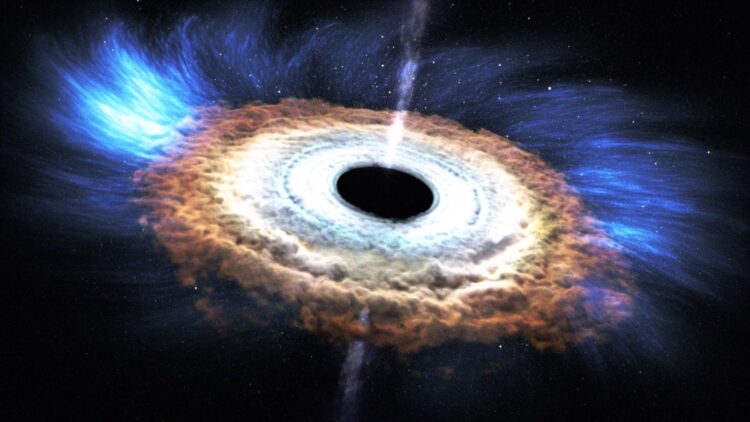Using NASA’s Hubble Space Telescope, astronomers have captured an image of a massive black hole eating up its environment in a quasar 3C 273. This find helps astronomers to see the intricate interactions of the forces of galaxies billions of years away from Earth.
This discovery is significant and will help explain the behavior of massive black holes and how they affect the universe.
Unveiling the monster: Hubble’s unprecedented view of 3C 273
Hubble Space Telescope of NASA has unveiled a detailed view of the central supermassive black hole of quasar 3C 273. This quasar is one of the brightest objects in the universe and is 2.5 billion light years away from the Earth. Hubble observations of the black hole surroundings showed features of L-shape and blobs of different sizes at a distance of up to 16000 light years from the black hole.
These mysterious objects are considered satellite galaxies, of which the quasar gobbles an enormous amount. The quasar’s luminosity is two and a half times greater than the brightest giant elliptical galaxies, making this object essential to study. The data also showed that the quasar was firing a 300,000-light-year-long jet of material at almost the speed of light, giving astronomers more information on the behavior of these colossal objects.
This research by Bin Ren of the Côte d’Azur Observatory shows that the observing capability of Hubble is vital in quasar analysis. The precise observations have given new insights into the investigation of galactic interactions and black hole physics, which has taken science forward.
IXPE’s revelations: understanding the shapes of black hole structures
IXPE, an imaging X-ray polarimeter, has been instrumental in determining the shapes of structures surrounding black holes at NASA. From the observations of IXPE, the newly discovered black hole in the binary system Swift J1727.8-1613 opened the way to understanding the behavior and the evolution of the black hole X-ray binary systems. First spotted when it briefly grew brighter in 2023, this black hole was one of the brightest X-ray sources in the sky.
With the help of IXPE observations, the scientists discovered the structure of the accretion disk and the moving hot plasma area called the corona around the black hole. The results suggested that the geometry of the corona remained constant during the outburst while the system and the X-ray emission decreased significantly. These observations are very important to understand the new forms and configurations of accretion disks and coronas in black holes.
The published works of the project’s researchers, Alexandra Veledina and Adam Ingram have stressed the significance of IXPE in determining the shape and form of ultra-powerful energy producers. IXPE results and data from other telescopes have given astronomers a complete picture of the black hole’s surroundings and improved our knowledge of these objects.
The future of black hole research: James Webb Space Telescope’s potential
Even though Hubble and IXPE have given humanity unprecedented information about black holes, the James Webb Space Telescope (JWST) will take this research to a different level. Using JWST, observations of quasar host galaxies and their surroundings will be provided with even higher resolution in the infrared range. The telescope’s penetration through cosmic dust and gas makes it easier to see the structures surrounding the black holes.
JWST’s data will also augment the data obtained through Hubble & IXPE observation and explain further how black holes function and how they affect the universe. These two potent telescopes will also be linked together so that astronomers can examine black holes as has never been done before and uncover never-before-seen secrets of these fascinating objects.
The future in the study of black holes is positive, especially with JWST on the horizon, which will dramatically transform the understanding of these giants. Such means, like Hubble, IXPE, and JWST, will open the next step in cooperation and reveal itself to the world’s most potent forces in space fields.
NASA’s findings of intergalactic monsters like the black hole in quasar 3C 273 and Swift J1727.8-1613 are revolutionizing the understanding of the universe. Scientists expect much better results once they combine data from Hubble, IXPE, and the James Webb Space Telescope, which is set to launch next year. Black hole research is up and coming, and the future will open up many opportunities for understanding the mechanisms of the universe’s most potent forces.

